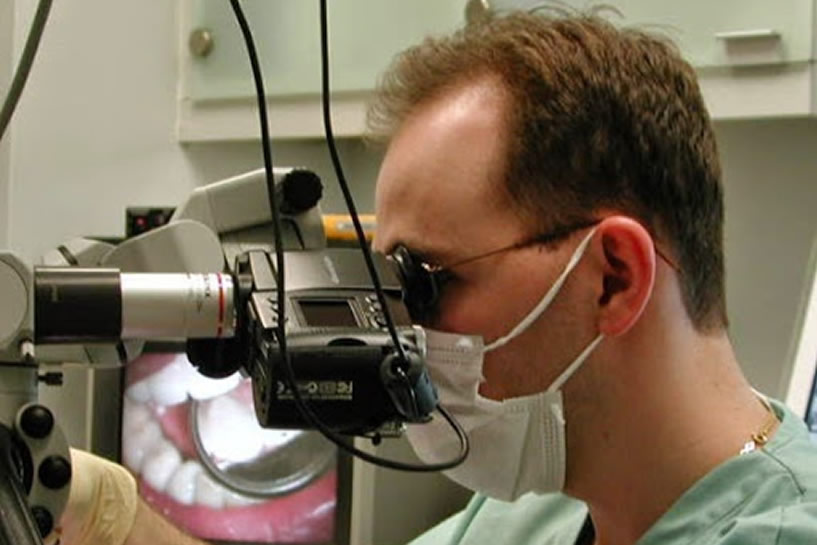Root canal treatments are vital dental procedures aimed at salvaging teeth that would otherwise require extraction, expertly administered by specialists such as those at Fifth Avenue Endodontics, overseen by Dr. Iofin. These treatments are necessary when the inner pulp of a tooth becomes infected or inflamed due to deep decay, cracks, or trauma. Without intervention, the infection can spread, causing severe pain and potentially leading to tooth loss.
In New York, where healthcare costs can be substantial, comprehending the financial implications of root canal treatment cost, including insurance coverage, is pivotal for patients. Insurance coverage plays a crucial role in determining out-of-pocket expenses, depending on whether the provider is in-network or out-of-network with the patient’s insurance plan. Fifth Avenue Endodontics’ team, under the leadership of Dr. Iofin, is committed to providing clarity on these matters, ensuring patients make informed decisions about their oral health.
Patients facing the prospect of a root canal should not only consider the immediate benefits of preserving their natural teeth but also understand how insurance can alleviate financial concerns associated with this essential dental procedure.
Introduction
Root canal treatments are crucial for preserving natural teeth but can often come with significant costs. Patients in New York frequently inquire about whether dental insurance covers these essential procedures. This article delves into the complexities of insurance coverage for root canals, shedding light on the differences between in-network and out-of-network benefits, as well as typical coverage percentages.
In the realm of dental health, root canal treatment stands out as a procedure aimed at saving teeth that are severely infected or damaged. By removing infected pulp and disinfecting the interior of the tooth, endodontists like those at Fifth Avenue Endodontics, guided by Dr. Iofin’s expertise, can prevent the need for extraction and preserve the natural dentition. This preventive approach not only restores oral health but also enhances overall well-being by maintaining the structural integrity of the mouth.
For patients considering root canal treatment cost in New York, understanding the financial implications is paramount. Dental insurance coverage plays a pivotal role in mitigating costs, though the extent of coverage can vary widely depending on several factors. These factors include whether the provider is within the patient’s insurance network, the type of insurance plan, and specific policy details such as deductibles and annual maximums.
Navigating insurance terms and policies can be daunting, but Fifth Avenue Endodontics is committed to assisting patients in comprehending these complexities. Dr. Iofin and his team prioritize patient education, ensuring that individuals are well-informed about their treatment options and associated costs. By clarifying insurance coverage for root canal treatments, patients can make informed decisions that align with their oral health needs and financial considerations.
In the following sections, we will explore the nuances of in-network versus out-of-network coverage, typical percentages of treatment costs covered by insurance plans, and practical steps patients can take to maximize their insurance benefits. Understanding these aspects empowers patients to approach root canal treatment with confidence, knowing they have the support and guidance of experienced professionals at Fifth Avenue Endodontics.
What is Root Canal Treatment?
Root canal treatment is a specialized dental procedure designed to save a tooth that has been compromised by infection or damage to its inner pulp. The pulp, a soft tissue containing nerves and blood vessels, can become infected or inflamed due to deep decay, fractures, repeated dental procedures on the tooth, or trauma such as a crack or chip.
When the pulp becomes infected or inflamed, it can lead to severe pain, sensitivity to hot or cold temperatures, swelling, and even abscess formation if left untreated. Root canal therapy, performed by skilled professionals like those at Fifth Avenue Endodontics under the leadership of Dr. Iofin, is crucial in alleviating these symptoms and preserving the natural tooth.
During a root canal procedure, the endodontist carefully removes the infected or inflamed pulp. This involves accessing the interior of the tooth through a small opening and using specialized instruments to clean out the infected tissue and debris. Once cleaned, the interior of the tooth is disinfected to eliminate any remaining bacteria that could cause further infection.
After cleaning and disinfection, the next step involves filling and sealing the tooth. This prevents recontamination of the tooth and strengthens its structure. In some cases, a dental crown may be placed over the treated tooth to provide additional protection and restore its function and appearance.
Root canal treatment not only relieves pain and discomfort but also allows patients to retain their natural tooth, which is often the best option for maintaining oral health and function. Understanding the process of root canal treatment cost in New York helps patients appreciate its importance and prepares them for discussions about treatment options with their dental provider.
In-Network vs. Out-of-Network Coverage
Understanding the distinction between in-network and out-of-network coverage is crucial for patients navigating insurance options for root canal treatment. When a dentist or endodontist is in-network with a patient’s insurance plan, it means they have agreed upon discounted rates with the insurance company. These negotiated rates typically result in lower out-of-pocket costs for patients because the insurance plan covers a larger portion of the treatment costs.
At Fifth Avenue Endodontics, patients benefit from the practice’s in-network status with numerous insurance providers in Manhattan. This status allows Dr. Iofin and his team to offer competitive pricing and facilitate smoother claims processing for patients. By choosing an in-network provider like Fifth Avenue Endodontics, patients can maximize their insurance benefits and minimize unexpected expenses associated with root canal treatment.
Conversely, out-of-network providers do not have pre-negotiated rates with insurance companies. While patients can still receive treatment from out-of-network providers, they may face higher out-of-pocket costs due to the lack of negotiated discounts. In some cases, insurance plans may reimburse a portion of the treatment costs, but patients often bear a greater financial responsibility compared to using an in-network provider.
When considering root canal treatment, patients should review their insurance policy’s provider network and consult with Fifth Avenue Endodontics to confirm their in-network status. This proactive approach ensures clarity on expected costs and coverage percentages before proceeding with treatment. By making informed decisions about in-network versus out-of-network providers, patients can effectively manage their oral health expenses while receiving quality care from experienced professionals like Dr. Iofin and his team at Fifth Avenue Endodontics.

Typical Coverage Percentages
Understanding how dental insurance plans cover root canal treatments is essential for patients planning their oral health care in New York. Dental insurance policies often provide coverage for root canal procedures, but the exact percentage covered can vary significantly depending on several factors.
In general, most dental insurance plans cover a portion of the costs associated with root canal treatment. This coverage typically ranges from 50% to 80% of the total treatment expenses. For instance, if a root canal procedure costs $1,000, and the insurance plan covers 80%, the patient would be responsible for paying the remaining $200 out of pocket.
The specific coverage percentage can depend on whether the dental provider performing the root canal is in-network or out-of-network with the patient’s insurance plan. In-network providers have agreements with insurance companies to accept discounted fees for services, resulting in higher coverage percentages and lower out-of-pocket costs for patients. On the other hand, out-of-network providers may result in lower coverage percentages, requiring patients to pay a larger share of the treatment costs.
Additionally, insurance plans may have annual deductibles, co-payments, or maximum benefit limits that affect how much they will cover for root canal treatments within a given year. Patients should review their insurance policy details carefully to understand these aspects and anticipate any potential financial obligations.
At Fifth Avenue Endodontics, where Dr. Iofin leads a team of skilled professionals, patients can benefit from clear explanations of insurance coverage and assistance in navigating the complexities of dental insurance. By working closely with their dental provider and understanding their insurance benefits, patients can make informed decisions about their oral health care and manage costs effectively.
Factors Affecting Coverage
Several factors play a significant role in determining how much insurance covers for root canal treatments, highlighting the importance of understanding policy specifics before undergoing treatment.
Firstly, the type of insurance plan greatly influences coverage levels. Plans such as Health Maintenance Organizations (HMOs) and Preferred Provider Organizations (PPOs) differ in their network structures and coverage arrangements. HMOs typically require patients to choose a primary care dentist and may offer lower premiums but limited provider choices. PPOs, in contrast, allow more flexibility in selecting providers and may cover a higher percentage of costs if the provider is in-network.
Secondly, policy details such as deductibles, annual maximums, and waiting periods can significantly impact coverage. Deductibles are the amount patients must pay out of pocket before insurance coverage begins, while annual maximums cap the total amount the insurance plan will pay for dental procedures within a calendar year. Waiting periods may apply before certain procedures, including root canals, are covered, requiring patients to wait a specified period after enrolling in the plan.
Moreover, pre-authorization requirements can affect coverage for major dental procedures like root canals. Insurance plans may require dentists to obtain approval from the insurance company before proceeding with treatment. This process ensures that the procedure is deemed necessary and meets the plan’s guidelines, potentially affecting reimbursement amounts if not followed correctly.
Navigating these factors requires proactive communication between patients, their dental providers, and insurance companies. At Fifth Avenue Endodontics under the guidance of Dr. Iofin, patients receive comprehensive support in understanding these complexities. By verifying insurance coverage details in advance and discussing potential out-of-pocket costs, patients can make informed decisions about their oral health care and financial planning.
Understanding these factors empowers patients to maximize their insurance benefits while receiving quality root canal treatment tailored to their needs. By staying informed and proactive, patients can navigate the nuances of insurance coverage effectively and ensure optimal dental health outcomes.
Understanding Your Insurance Coverage
To determine coverage for root canal treatment, patients should:
- Review Policy Documents: Understand the specifics of their dental insurance policy, including coverage percentages and any limitations.
- Consult the Provider: Contact Fifth Avenue Endodontics to verify their network status and estimate costs.
- Explore Financing Options: If out-of-pocket costs are a concern, discuss financing or payment plans that may be available.

Conclusion
Dental insurance often covers root canal treatment in New York, but the extent of coverage depends on whether the provider is in-network or out-of-network, and the specifics of the insurance policy. Patients at Fifth Avenue Endodontics, under the care of Dr. Iofin, can benefit from understanding these nuances to make informed decisions about their dental health. For more information or to schedule a consultation, contact Fifth Avenue Endodontics today.
Understanding insurance coverage for root canal treatment can alleviate financial concerns and ensure patients receive the care they need to preserve their natural teeth.

